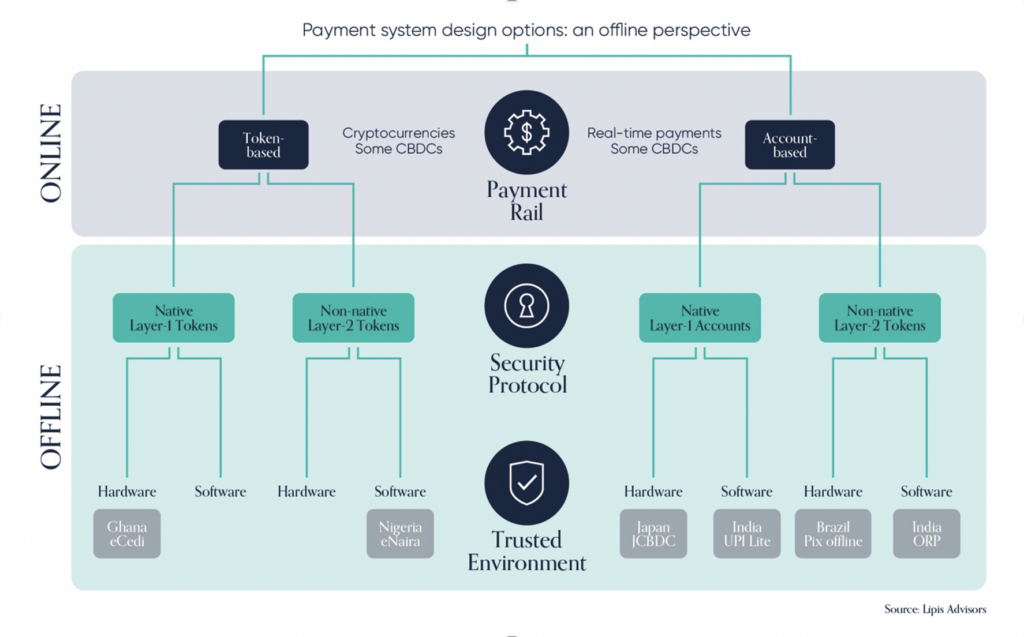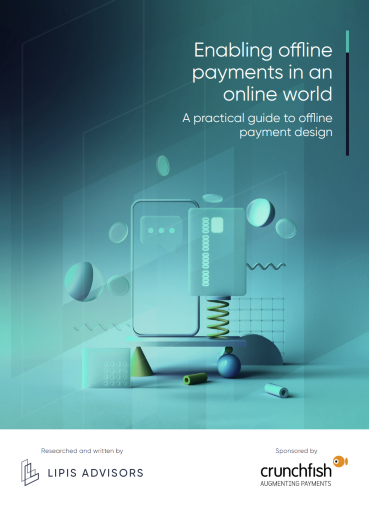
ENABLING OFFLINE PAYMENTS
IN AN ONLINE WORLD
Despite all the recent attention on the topic of offline payments, there still lacks a clear understanding in the market around the practical design choices and trade-offs for offline real-time payments and CBDCs. Both this whitepaper and its webinar, the first in a series, aim to describe the imperative for and practical definitions of offline payments and provide an overview of the various design considerations for payment system operators. It will conclude by detailing ongoing innovation in this space, including real-world examples of offline payment implementation globally.
The whitepaper includes a novel and elegant way to categorize offline payment solutions using three design options.
This categorization will be a provide the payments ecosystems and issuers a better understanding of the various kinds of offline payment solutions that may be implemented to augment their online payment systems.

In designing the architecture for offline payments, it is important to note that the main design choices are agnostic to the underlying payment rail. The main design choices are instead related to the type of security protocol of the offline transaction (native layer-1 vs. non-native layer-2) as well as the trusted environment of the payer’s bearer application (hardware-based vs. software-based). This distinction is illustrated in the figure above.
Online Payment Rail: The design options are token-based or account-based. All cryptocurrencies are token-based, whereas all real-time payments systems are account-based. Central banks have a choice whether their online payment rail for CBDC should be token- or account-based. Crunchfish CEO Joachim Samuelsson has for almost two years pointed out the benefits of an account-based payment rail for CBDC.
Offline Security Protocol: The options are either native (layer-1) or a non-native (layer-2) tokens security protocol. Native/non-native is reference to the underlying online token-based or account-based payment rail. Crunchfish has a strong IP-position with non-native (layer-2) tokens after having received a positive patentability report in the international patent process.
Offline Trusted Environment: Here the options are either hardware-based or software-based. Whereas hardware-based solutions are necessary to implement Digital Cash on non-mobile devices, such as cards and wearable, software-based approaches are preferred on the smartphone, for scalability reasons. Crunchfish has strong position in the offline payments market with its software-based approach as the competition have only implemented hardware-based offline solutions. This will be discussed at the ITU’s Digital Currency Initiative webinar on offline payments for financial inclusion.
